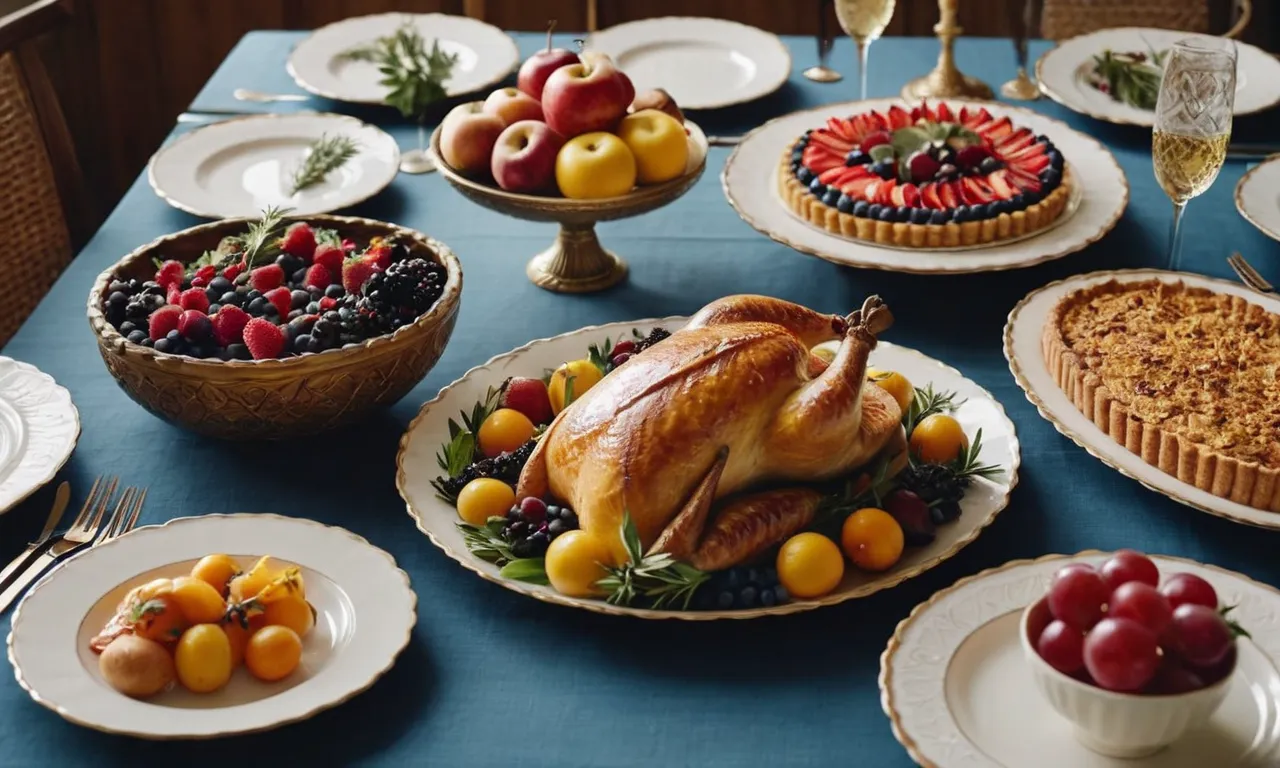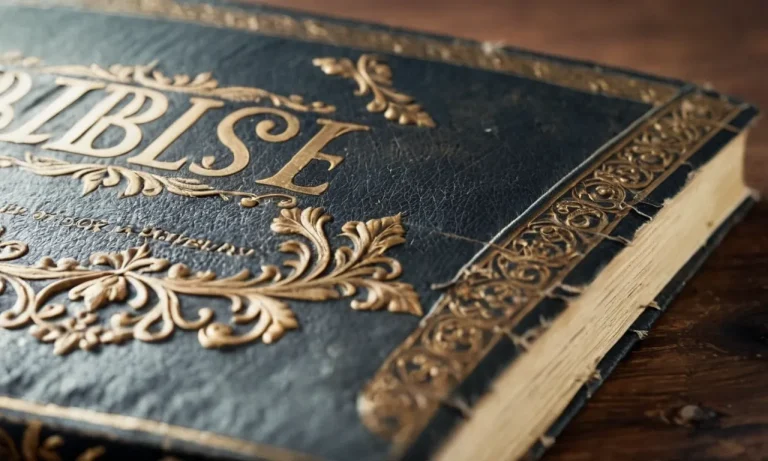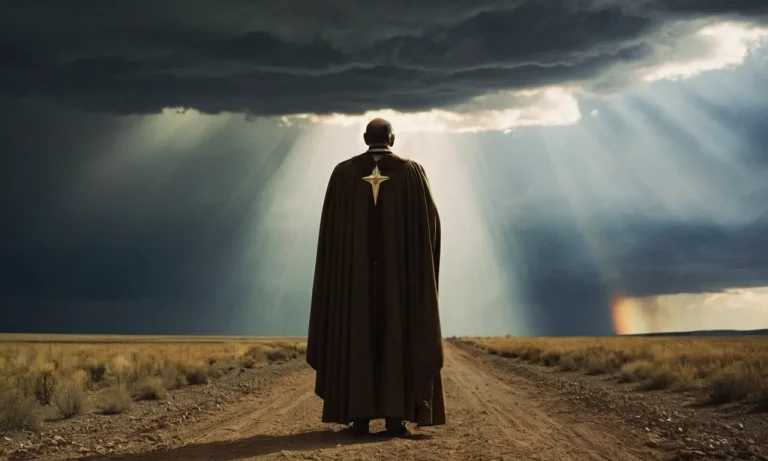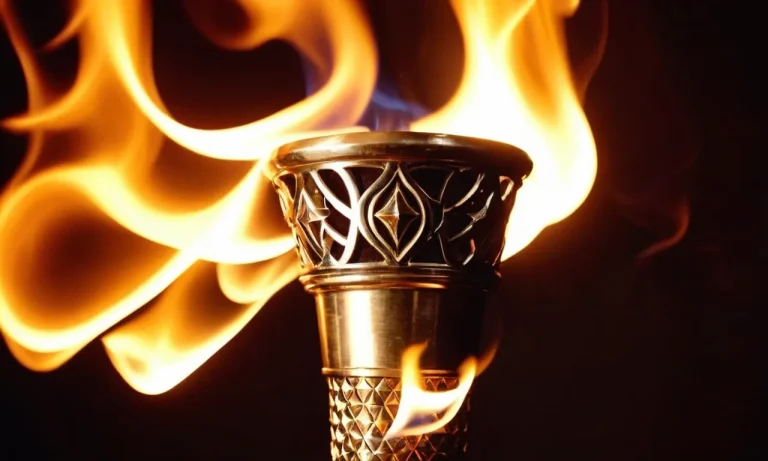How Many Feasts Are There In The Bible?
The Bible mentions several important feasts that were celebrated by the Israelites and early Christians. If you’re short on time, here’s a quick answer: there are 7 major feasts described in the Bible.
In this comprehensive article, we will explore the background, meaning, and details around each Biblical feast. We’ll provide key information like what each feast commemorates, when it takes place, how it was celebrated historically, and any enduring legacy or symbolism for Christians today.
The 7 Major Feasts of the Bible
Passover
The Passover is the first feast of the Lord mentioned in the Bible (Exodus 12:1-14). It commemorates the night when God delivered the Israelites from slavery in Egypt. On the night of the Passover, each Israelite family killed an unblemished lamb and spread its blood on the doorposts of their home.
This was to protect them from the tenth and final plague – the death of the firstborn sons. When the Lord passed through Egypt to strike down the firstborns, He passed over the homes marked with lamb’s blood.
The Passover feast is a wonderful foreshadowing of Jesus Christ, the perfect Lamb of God who takes away the sins of the world (John 1:29).
Unleavened Bread
The Feast of Unleavened Bread is celebrated for seven days following Passover (Exodus 12:15-20). During this time, the Israelites were to eat bread made without yeast to commemorate their hasty departure from Egypt. There was no time for the bread to rise.
This feast reminds believers that sin (represented by yeast) should be removed from their lives and homes.
First Fruits
The Feast of First Fruits took place on the day after the Sabbath following Passover (Leviticus 23:9-14). On this day, the Israelites were to bring the early crops of their spring harvest and wave them before the Lord. This acknowledged that the land and crops were a gift from God.
First Fruits foreshadowed Jesus’ resurrection as the first fruits of the righteous (1 Corinthians 15:20-23). Jesus was resurrected on the Feast of First Fruits.
Pentecost (Shavuot)
Pentecost comes 50 days after First Fruits. In Old Testament times, it commemorated the spring wheat harvest (Exodus 23:16). But Pentecost was also associated with the giving of the Law on Mt. Sinai (Exodus 19).
In the New Testament, Pentecost takes on a new meaning – the coming of the Holy Spirit upon the church (Acts 2:1-4). On the original Pentecost, God wrote His laws on tablets of stone; on the new Pentecost, He wrote His laws on believers’ hearts.
Trumpets (Rosh Hashana)
The Feast of Trumpets takes place on the first day of the seventh month on the Jewish calendar (Leviticus 23:23-25). Trumpets were blown to prepare the people for the upcoming Day of Atonement. Many scholars believe this feast represents the future Rapture of the Church (1 Thessalonians 4:13-18).
The trumpet blast will call believers home to heaven and leave unbelievers behind to face the Tribulation.
Day of Atonement (Yom Kippur)
The Day of Atonement is celebrated on the tenth day of the seventh month (Leviticus 23:26-32). It was the day when atonement was made for the sins of the people. There were no festivities or celebrations on this solemn day – only fasting and sacrifice.
This foreshadowed Jesus’ atonement on the cross for the sins of mankind (Hebrews 9:11-14). Today, believers can rejoice that their sins have been fully paid for.
Tabernacles (Sukkot)
The Feast of Tabernacles concludes the fall feasts (Leviticus 23:33-43; Deuteronomy 16:13-15). This seven-day feast celebrates the autumn harvest and commemorates Israel’s 40 years of wilderness wandering before entering the Promised Land.
Jews construct temporary booths or tabernacles to live in during the feast to remember God’s provision in the wilderness. This feast points ahead to the return of Christ when God will tabernacle with His people forever (Revelation 21:3).
Minor Feasts and Other Celebrations
Purim
Purim is a joyous Jewish holiday that celebrates the deliverance of the Jewish people from a plot to massacre them in the ancient Persian Empire. The story is told in the Biblical Book of Esther. According to the tale, Haman, the royal vizier, devised a plot to kill all the Jews in the empire.
However, thanks to the courage and cunning of Esther and her cousin Mordecai, the plot was foiled and the Jewish people were saved.
Purim is celebrated with feasting, charity giving, public readings of the Book of Esther, and revelry. A common tradition is masquerading in costumes and putting on Purim plays. Foods such as hamantaschen pastries, Kreplach dumplings, and even salad are eaten.
The carnival-like atmosphere has made Purim one of the most beloved Jewish holidays. As the Bible says, “…they should make them days of feasting and joy, and of sending portions of food to one another, and gifts to the poor” (Esther 9:22).
Dedication (Hanukkah)
Hanukkah, also known as the Festival of Lights or Feast of Dedication, is an eight-day Jewish holiday commemorating the rededication of the Second Temple in Jerusalem in the 2nd century BCE. After King Antiochus IV and his Greco-Syrian Empire desecrated the Temple and oppressed the Jews, the Maccabean rebels revolted and regained control of Jerusalem.
However, there was only enough sacred oil to keep the menorah candelabrum burning for one night. Miraculously, it lasted for eight full nights.
Hanukkah is observed by lighting candles on a nine-branched candelabrum called a Hanukkiah each night, playing games such as dreidel, exchanging gifts, and eating foods cooked in oil like latkes (potato pancakes) and sufganiyot (jelly doughnuts).
The holiday reminds Jews to spread the light of God and moral truth throughout the world. As the My Jewish Learning website notes, Hanukkah celebrates the triumph of light over darkness, purity over adulteration, spirituality over materialism.
Wood Offering Feast
The Wood Offering Feast was a minor Jewish holiday that occurred a few days before Passover. It was a celebration when people brought wood to the Temple in Jerusalem to keep the altar fires burning throughout Passover. As the Bible says, “And we cast lots for the wood offering…” (Nehemiah 10:35).
Bringing wood for the sacrificial fires was such an important practical and spiritual act that it became an official feast day. Though not on the scale of major holidays like Passover, Pentecost or Tabernacles, it played a vital logistical role.
The sheer amount of animals sacrificed on Passover created the need for vast amounts of wood. The Talmud expanded on the rituals and types of wood brought. This obscure festival faded after the Romans destroyed the Second Temple in 70 CE.
However, it lives on as a testament to the communal dedication that fed the flames of ancient Jewish worship.
Feasts as Foreshadowing of Jesus Christ
The feasts prescribed in the Old Testament were rich in symbolic meaning and prophetic significance. They not only commemorated important events in Israel’s history, but also foreshadowed the coming of the Messiah and the fulfillment of God’s plan of salvation.
The Spring Feasts
The spring feasts of Passover, Unleavened Bread, First Fruits, and Pentecost all point to the first coming of Jesus and aspects of His earthly ministry.
- Passover foreshadowed the sacrificial death of Christ, the Lamb of God, whose blood covers and protects believers (1 Cor. 5:7).
- Unleavened Bread symbolized Jesus as the Bread of Life (John 6:35). Leaven represented sin, which Jesus came to remove.
- First Fruits anticipated Jesus’ resurrection as the first fruits of the righteous (1 Cor. 15:20).
- Pentecost looked forward to the outpouring of the Holy Spirit on believers (Acts 2:1-4).
The Fall Feasts
The fall feasts of Trumpets, Atonement, and Tabernacles point to Jesus’ second coming and the completion of God’s purposes:
- Trumpets represents the trumpet announcing Christ’s return and the gathering of His people (1 Thess. 4:16-17).
- Atonement fulfilled by Christ’s final removal of sin (Rom. 11:27).
- Tabernacles commemorates God dwelling with His people (Rev. 21:3) and the marriage supper of the Lamb (Rev. 19:9).
While not explicitly mentioned in Scripture, the feasts illustrate God’s ingenious forethought in preparing the way for the Messiah. Their observance kept anticipation for the Redeemer alive in Israel and continues to inspire hope for His promised return.
Modern Celebrations of Biblical Feasts
In today’s world, many biblical feasts described in the Old Testament are still celebrated by Jews and some Christian denominations. These modern celebrations often retain symbolic meanings and traditions originating from biblical times, even as new customs and practices have emerged over the centuries.
Passover
Passover (Pesach in Hebrew) commemorates the biblical Exodus story when God “passed over” the homes of Israelites during the last plague on Egypt. This spring festival lasts 7-8 days and continues to center around a ritual meal called the Seder.
The Seder includes symbolic foods like matzah bread, bitter herbs, lamb shank and the Four Cups of Wine. While retaining these age-old elements, modern Seders often feature creative or updated rituals, recipes and discussions relevant to contemporary Jews.
Shavuot
Shavuot now marks the giving of Torah to Israelites at Mount Sinai. To recall the spring harvest setting, many observant Jews still decorate their homes and synagogues with flowers and greenery. However, this feast day has evolved into a celebration of Jewish learning and commitment to the Torah’s teachings.
Synagogues often hold confirmation ceremonies for 10-12 year-olds on Shavuot, affirming their schooling in Hebrew and scripture up to bar/bat mitzvah age.
Sukkot
Sukkot commemorates the temporary wilderness dwellings used by Israelites after the Exodus. Accordingly, building a sukkah hut outdoors is integral to the modern festival. Families decorate their sukkah with autumn greenery, flowers and fruits before eating meals or sleeping inside it during the 7-8 day holiday.
While honoring this ancient tradition, many Jews also see Sukkot as a reminder of the fragile nature of life and home. Social advocacy around housing insecurity often happens alongside Sukkot celebrations.
Although details vary across denominations, these major biblical feasts continue to shape spring and fall holiday cycles for modern Jews. The 21st century sees renewed interest in understanding biblical roots even as technology, food innovations and political issues leave their own mark on ancient celebrations.
By valuing both old and new, the feasts retain religious meaning and cultural richness year after year.
Conclusion
As we have seen, the Bible prescribes 7 major feast celebrations for the Israelites that were rich in meaning and symbolism. While some of these continue to be celebrated in Judaism today, Christians also see the feasts as foreshadowing Jesus Christ and the promises fulfilled in Him.
Learning about these important Biblical feasts gives insight into the culture of ancient Israel, God’s redemptive plan in history, and how modern believers carry on some of these traditions even thousands of years later.








